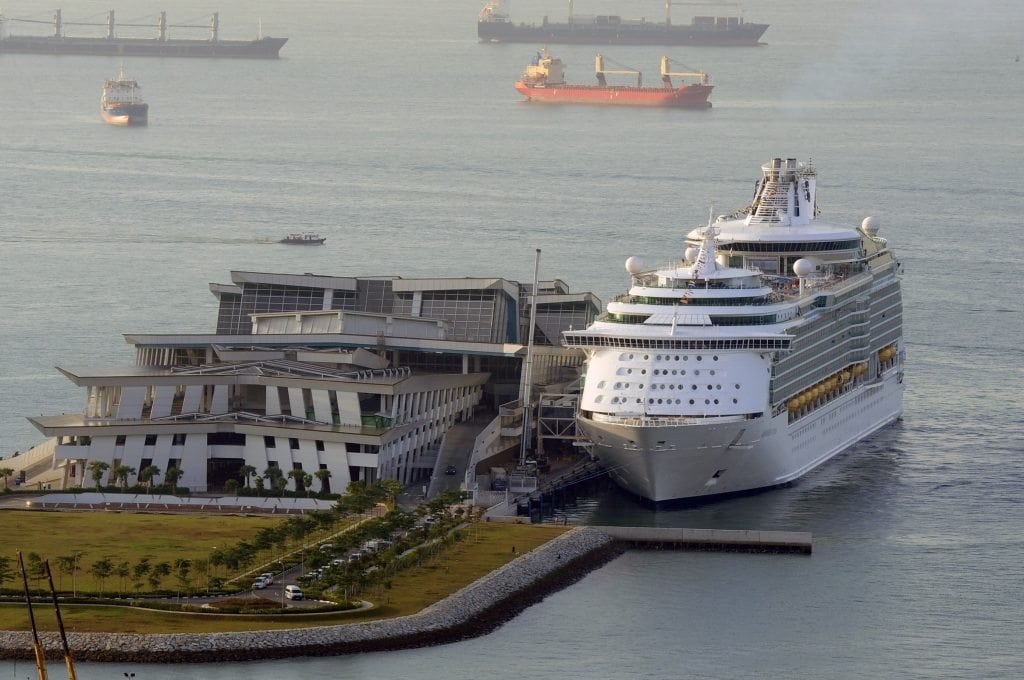Southeast Asian Cruising Positioned to Reap Big Benefits From China and Australia

Skift Take
 Editor's Note: Skift launched a new series, Gateway, as we broaden our news coverage geographically with first-hand, original stories from correspondents embedded in cities around the world.
Editor's Note: Skift launched a new series, Gateway, as we broaden our news coverage geographically with first-hand, original stories from correspondents embedded in cities around the world.
We are featuring regular reports several times per week from Beijing, Singapore, Caracas and Cape Town, and look for us to add Dubai and India soon. Gateway Singapore, for example, signifies that the reporter is writing from that city although her coverage of the business of travel will meander to other locales in the region. Read about the series here, and check out all the stories in the series here.
As it marks 10 years of operating in Asia, Royal Caribbean Cruises has on its radar Southeast Asia’s cruise development, which has great potential and is becoming critical as China and Australia continue to grow exponentially as source markets.
The more the China and Australia markets expand, the more there will be new ports, ships and itineraries in those regions, and the greater the need there will be to develop cruising in Southeast Asia to redeploy the ships there in the winter months, says Adam Goldstein, president and COO of Royal Caribbean.
Goldstein was in Singapore celebrating 10 years since Royal Caribbean established its Asia-Pacific regional headquarters and started regular home-porting seasons in the republic.
Asia’s cruise market size surpassed the 2 million mark in 2015, according to Cruise Lines International Association. China accounts for nearly half of that, and had a 66 percent compound annual growth rate between 2012 and 2015. The other key Asian markets -- those with more than 100,000 passengers -- are Taiwan, Singapore, Japan, Hong Kong and India.
The China market is projected to be three to four million passengers by 2020, half of the future Asian market forecast of 8 million passengers.
Australia meanwhile has grown more than six-fold since 2004 with over 1 million passengers in 2014.
Goldstein says infrastructure development is going to be one of the most significant undertakings in the region over the coming years. “We are planning to invest in the region in commercial development without question. It’s part of what we do,” he says, although nothing is concrete yet.
“With Sydney in the south, Singapore more or less in the middle and China homeports to the north, these are the crucial centers of cruise activities. There will be other homeports over the course of time but these are the ones propelling the cruise industry today.
“The seasonality of China is real. There needs to be warm weather options throughout the region. We can’t have all the ships that call on China in the spring, summer, and fall going to the other side of the earth for the winter season. So Singapore, like Sydney, needs to provide warm weather cruise options that complement the China cruise market.
“ASEAN (Association of Southeast Asian Nations) itself has over 600 million people in it. It is a growing region economically. I believe people who live in the region are interested (to cruise),” Goldstein says.
Singapore’s Role in Developing Asia-Pacific Cruising
Goldstein says Singapore plays an instrumental role in the overall development of the Asia-Pacific cruise sector. “Singapore is an extraordinary gathering place of the world, and it is also the relationship that we have had as a company and I have had personally with the STB (Singapore Tourism Board). I’ve really worked with generations of STB people (since the '90s) trying to make progress, which we have.
"There’s still much more to go but they have been visionary, always seen the opportunity, always pursued discussions with the other ASEAN countries about what this could mean,” says Goldstein.
With its strategic maritime position, Singapore has a lot to gain from cruise tourism growth in Southeast Asia and has invested in building two cruise terminals that can accommodate bigger and newer ships. Singapore has also engaging neighbours to do the same.
Last month, as part of the annual ASEAN Tourism Forum, which was its turn to host, Singapore organised a cruise dialogue for the tourism ministers and heads of the tourist boards of the 10 ASEAN nations. The discussion revolved around the potential of the cruise industry, including showing examples of cruise port development projects around the world, and examining how cruise lines and entities such as the World Bank could partner with countries in Southeast Asia to support cruise port development.
At the end of their meeting, the ministers agreed to develop a joint declaration on cruise tourism which “will set out principles to spur port and destination development in the region, and further encourage industry stakeholders to collaborate and grow cruise tourism in the region”, a media statement says.
Separately, the ministers toured the Royal Caribbean's Mariner of the Seas. “
Such a delegation of minister-level officials onboard would not have happened 15 or 20 years ago,” says Goldstein. “That’s because they see that the market is growing, they see there are opportunities for their countries, they want to understand what the issues are. Singapore deserves a lot of credit for that because they have been advocating on our behalf and our industry’s behalf for a long time. I feel we’ve forged a really effective partnership with them and look forward to more.”
Itinerary Changes and Easing Visa Requirements
Currently, the cruise development discussion in Southeast Asia is focused on starting industry dialogue and tackling basic issues such as consolidating standard itineraries, easing visa restrictions, fine-tuning logistics for handling people at the ports, increasing regional source markets, resolving cabotage policies, and building awareness of cruising.
A UNWTO report on Sustainable Cruise Tourism Development Strategies commissioned by ASEAN believes this is “an opportune moment” to inject sustainable development into these discussions and initiatives.
While the momentum to develop Southeast Asia as a cruise playground is clearly picking up, the report warns of the need to manage growth so as to preserve the environmental and cultural heritage of the region. Even without cruising, Southeast Asia received 109 million international arrivals in 2015 and is targeting 121 million this year.
“Cruise tourism is characterized by bringing large numbers of people to concentrated areas of destinations for brief periods, thus multiplying and concentrating the impacts,” says the report.
“Thus, cruise tourism merits higher levels of scrutiny and assessment for its economic, environmental and cultural implications.”
Indonesia and the Philippines are among countries in the region making efforts to develop cruise tourism. The former wants to promote developments in Bali and beyond and is prioritising infrastructure in five ports, Tanjung Priok, Tanjung Perak, Belawan, Makassar and Benoa Bali, so they can berth larger cruise ships.
Indonesia is also reviewing the consistency of its immigration clearance across all checkpoints to support the cruise industry.
The Philippines implemented a National Cruise Tourism Development Strategy last year, which entails infrastructure and destination development, and refinement of regulations and processes.




